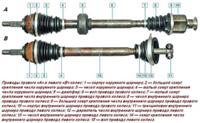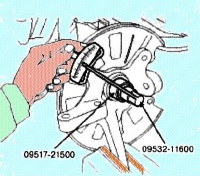All-season oil is enough for your car engine
Renault in the owner's manual recommends "Elf" branded engine oil for your Megane, but you don't have to.
Oil is good or bad, its specifications and the correct viscosity grade decide.
If you add oil, you can generally mix varieties from different manufacturers without any problems.
But you must then take into account the fact that this will slightly damage the properties of the engine oil.
In fact, each brand has a special combination of additives that, when mixed with another oil, can lose their effectiveness.
Based on this, the combination of mineral and synthetic oils does not make sense.
Be careful: diesel lubricating oils, which are intended exclusively for diesel engines, you should not mix with oils for gasoline engines.
Otherwise, you risk damaging the engine.
Motor oil for Megane engines must have one of these designations:
Gasoline engine: APISG; APISH; CCMC-G4 or G5; ACEA A2 96; ACAE AZ 96
Diesel engine: ACEA B2 96; ACEA VZ 96; API CD; SSMS PD2
Renault recommendations for oil viscosity:
In Central European latitudes, it is enough to have oil of viscosity class 15 W 40 or 10W40 throughout the year.
Only at a very high or low, long-lasting temperature, the oil needs to be changed.

The amount of oil to be added between the lower and upper markings is 1 liter, and for 16V it is approximately 0.6 liters.
Half a liter is enough if the oil level does not fall below the lower mark.
Add enough oil to keep the level below the upper mark.
Excessive engine oil can, under certain circumstances, be sucked in through the crankcase ventilation, causing the air filter to become dirty.
A typical oil change, where you drain the oil and change the filter, takes time because you have to jack up the car.
Oil changes are faster at self-service gas stations with suction units.
But this method has its drawbacks: sediment remains in the pan and without changing the filter, changing the oil is only half the battle.
At a car repair shop, oil changes are the most expensive, as they usually use only expensive grades of oil.
If you decide to delegate the work of a gas station, you must buy oil in advance.
In engines, oil is used to lubricate and cool moving parts; during operation, it is sometimes necessary to add oil between oil changes.
If after running the car the oil consumption exceeds 0.5 l per 1000 km, you must contact a Renault service station.
Check the engine oil level periodically at least before every long trip to avoid engine damage.
Be careful when changing engine oil as the oil is hot and can cause burns.
You will need an 8mm square wrench, a special wrench for unscrewing the filter, a container for draining the oil.
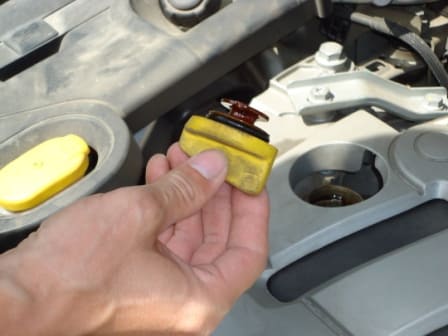
Warm the engine up to operating temperature and turn it off. Install a pan to collect the leaked oil.
Remove the oil filler cap and remove the oil drain plug from the oil pan.
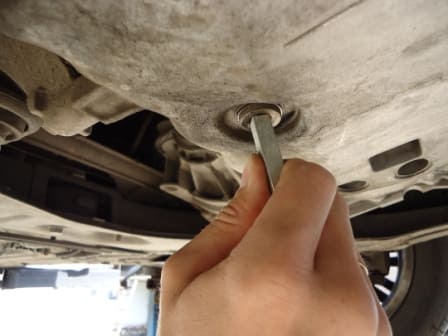
Wait until all the oil has drained from the oil pan.
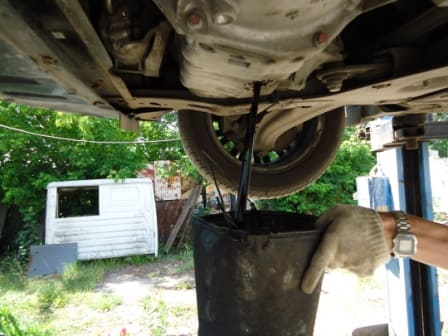
Install the oil drain plug with a new gasket.

Tightening torque: 29-41 Nm
Fill the correct amount of the required engine oil into the engine
Start the engine and Check for oil leaks.
Check the engine oil level and top up if necessary.
Replace the cap on the oil filler neck.
Oil filter change
The procedure for changing the oil filter for the F4R and K4J, K4M engines is the same, the only difference on the F4R is that you have to remove the air conditioning compressor strut.
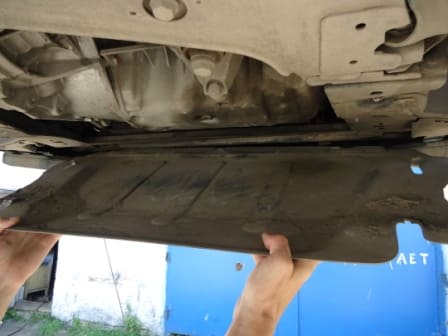
Raise the vehicle and remove the crankcase protection.
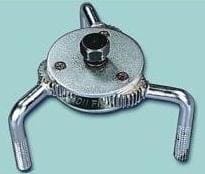
Unscrew the oil filter with a special wrench.
If the rubber sealing ring of the oil filter remains on the cylinder block, remove it. (Without a special key of this type, it is very difficult to unscrew the filter, very poor access).
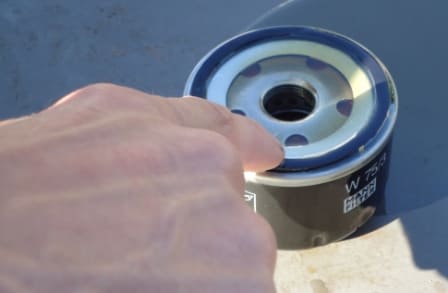
Lubricate a thin layer of clean engine oil on the rubber o-ring of the new oil filter
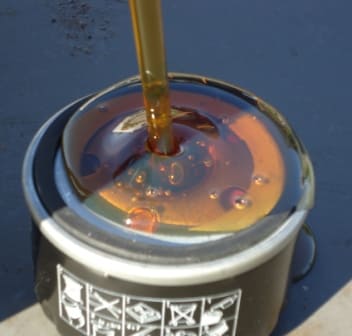
Pour oil into the filter before installing the filter
Insert the oil filter until the oil filter O-ring contacts the cylinder block.
Tighten the filter 1.1/6 turns.
Start the engine and check for oil leaks.
Turn off the engine and wait 5 minutes for the oil to drain into the sump.

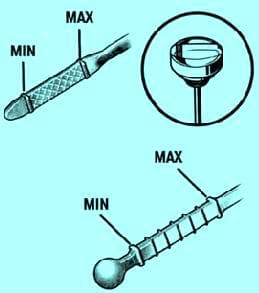
Check the engine oil level and top up if necessary.
Oil level detection
To accurately determine the oil level, park the vehicle on a level surface and turn off the engine for a long time.
Oil level check:
- - on the instrument panel;
- - using an oil dipstick.
Oil level control according to indications on the instrument panel.
When the ignition is switched on and for about 30s:
- - if the oil level is normal, the display shows the message: Oil level is normal.
To determine the oil level more accurately, press the button to reset the trip odometer or the button to view information on the on-board computer.
The rectangles shown on the display indicate the oil level. As it decreases, squares are gradually replaced by dashes: (message 2).
To return to normal on-board computer mode, press the button again.
At the minimum allowable oil level, the squares are completely replaced by a dash (message 3) and the "SERVICE" warning lamp lights up on the instrument panel.
After receiving such a signal, add oil to the normal level.








